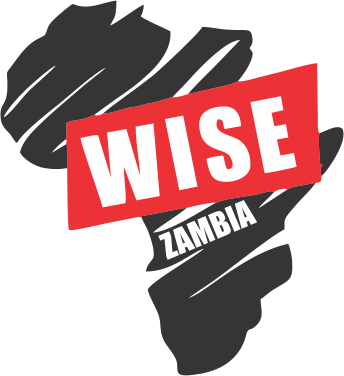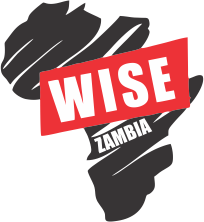Valuing Water in Zambia
Valuing Water in Zambia
Martin Chihango Kabanda and Welly Mapanza Sikananu
1.0 Introduction
The Millenium Development Goals (MDGs) and Sustainable Development Goals (SDGs) of the United Nations (UN) demonstrate that safe drinking water is officially acknowledged as an international agenda and priority. The SDG goal 6 states that “Water sustains life, but safe clean drinking water defines civilization”. Despite this recognition, many people still do not have access to safe drinking water, let alone basic water. Globally, there are an estimated 2.2 billion people worldwide who do not have access to clean drinking water. In Zambia also, there are inequalities in access to safe drinking water. For example, about 90% of urban households have access to safe drinking water, while only 53% of rural households do. Furthermore, urban residents have 70% sanitation access, compared to just 25% for rural residents.
Water occupies more than two-thirds of the earth’s surface, but it is still salty and unfit for human consumption. Only 2.7 percent of the total freshwater on the planet is accessible, and only 1% of the available freshwater (in reservoirs, rivers, and groundwater) is usable. The majority of available freshwater supplies are unavailable due to hidden parts of the hydrologic cycle (deep aquifers) and glaciers (frozen in polar ice), implying that healthy drinking water on Earth makes up just 3% of the total freshwater resources. Desalination may also be used to extract freshwater from seawater. In certain areas, there is a lack of freshwater (physical scarcity).
Safe and wholesome water is considered as being free of pathogenic agents, harmful chemical substances, nice to taste, colorless, and odourless, and suitable for domestic use. Water is said to be polluted or tainted if it does not meet the above requirements. Human activity has made water pollution a rising threat in many developing countries. Without enough and clean drinking water, it is impossible to provide good health to the population.
The United Nations hence designated March 22nd as World Water Day to raise awareness about the importance of freshwater worldwide. The theme for this year’s celebration was “valuing water.” The value of water is about much more than its price – water has enormous and complex value for our households, food, culture, health, education, economics and the integrity of our natural environment. If we overlook any of these values, we risk mismanaging this finite, irreplaceable resource. In line with this theme, this paper presents the value of water in the Zambian context with emphasis on the Western Province.
2.0 Value of Water in Supporting Life
Water is connected to every forms of life on earth and plays an important role in human survival. Safe and readily available water is important for public health, whether it is used for drinking, domestic use, food production or recreational purposes. It accounts for 60-75% of a person’s weight. Dehydration can occur with a loss of only 4% of total body water, and a loss of 15% can be fatal. Similarly, a person could go a month without eating, but not more than three days without water. All life forms are regulated by this vital dependency on water. Water is obviously necessary for life.
In many parts of the world, insects that live or breed in water carry and transmit diseases such as Malaria. Some of these insects, known as vectors, breed in clean, rather than dirty water, and household drinking water containers can serve as breeding grounds. The simple intervention of covering water storage containers can reduce vector breeding and may also reduce feacal contamination of water at the household level. Absent, inadequate, or inappropriately managed water and sanitation services expose individuals to preventable health risks. Contaminated water and poor sanitation are linked to transmission of diseases such as cholera, diarrhoea, dysentery, hepatitis A, typhoid, and polio.
Diarrhoea is the most widely known disease linked to contaminated food and water but there are other hazards. In Zambia, about 829,000 people are estimated to die each year from diarrhoea as a result of unsafe drinking-water, sanitation, and hand hygiene. Despite diarrhoea being largely preventable, and the deaths of 297,000 children aged under 5 years could be avoided each year if these risk factors were addressed. Where water is not readily available, people may decide hand-washing is not a priority, thereby adding to the likelihood of diarrhoea and other diseases that flourish in poor hygiene.
On the other hand, widespread cholera outbreaks have occurred since 1977, predominantly in the capital city of Lusaka. In October 2017 for example, Zambia battled a severe cholera epidemic that resulted in more than 81 deaths nationwide. In a study of dysentery cases from 2016 to 2018, Katembe et al. (2019) identified that mostly the rainy season corresponding to November to April and cases tending to reduce in the dry season.
Based on the above issues, water is valued in Zambia as being in ensuring the well being of the people. This is evidenced through the policy, laws and regulations as well as the institutional arrangements in place that the country has put in place in order to ensure safe drinking waters. In 2019 for Instance, the Government through the National Urban Water Supply and Sanitation Programme; and the National Rural Water Supply and Sanitation Programme, at an estimated cost of US $6 billion put 647 boreholes out of an estimated target of 1, 231 in Western Province, distributed in all the 16 Districts under the Transforming Rural Livelihoods in Western Zambia being implemented with support from the African Development.
3.0 Economic Value
Water is vital to Zambia’s economy, especially in the areas of oil, agriculture, and domestic water, as well as wildlife. During dry seasons in the region, water shortages are a major issue for the country. As the effect of climate variability grows, water resource management is becoming increasingly difficult.
People spend less time and money physically gathering water when it comes from improved and more available sources, allowing them to be more efficient in other ways. This can also improve personal safety by reducing the need to travel long distances or take risks to obtain water. People are less likely to fall ill and incur medical costs when they have better water supplies, and they are better able to stay economically active.
Improved water quality and sanitation, as well as improved water resource management, have been described as key factors in boosting economic growth and reducing poverty. Zambia, unlike many other countries in the region, has plentiful water resources, though water may be scarce during the dry season, especially in the south. Annual rainfall in the north ranges from 1400 mm to 700 mm, while rainfall in the south is just 700 mm.
The Barotse flood plain which forms the main economic water source in Western province consists of an arable land system, canals, lagoons, and swamps. It has a gross wetland area of 1.2 million hectares and a surface area of 550,000 hectares. After the key rainy season, the flood plain floods, with floods peaking in April and receding by July. The annual flooding regime in the Barotse flood plain has a significant impact on the livelihoods and economies of families who practice agriculture on the plains, particularly because it forces seasonal migration and livestock to higher ground during flooding.
Water is important to agriculture as the Western Province has about 90% of its rural population involved in small-scale farming. On five or less hectares, they primarily grow rain-fed rice, maize, groundnuts, roots, and tubers for their own consumption. Fishing is another important economic operation in the Barotse Flood plain. These plains provide a favorable ground for breeding of fish, resulting in a significant food source and economic activity for the locals.
4.0 Cultural Value of Water in Western Province
The Barotse Floodplain is the second largest wetland in Zambia after the Lake Bangweulu system, which differs by having a large permanent lake and swamps, and a much smaller area which dries out annually. The main body of the plain covers about 5,500 Km², but the maximum flooded area is 10,750 Km² when the floodplains of several tributaries are taken into account, such as the Luena Flats. A range of higher land runs parallel to the plains on the shore’s northern border. The natural forum for traditional human settlements and land use has been created by a combination of flood and upland areas, on which the popular Kuomboka ceremony has been maintained for years.
The Kuomboka Ceremony, which is one of Zambia’s most famous traditional ceremonies considers water as an important part of Lozi culture. The Kuomboka ceremony takes place every year at the end of the rain season, in March or April. It’s one of the most important traditional pride. The word ‘Ku-omboka’ means ‘getting out of the water,’ and it refers to the Litunga, his Queen, and a group of their subjects moving from Lealui, which floods every year, to Limulunga.
The journey is a sight to behold, with the huge model elephant on top of the royal barge known as the Nalikwanda (meaning “for the people,” referring to the fact that the boat could be used by anyone, although later it was only used by the King). A separate barge transports the Queen. The King beats a royal drum called the maoma the night before Kuomboka, which is a call to all able-bodied men in the kingdom to prepare to escort their king.
References
Baidu-Forson, J.J., Phiri, N., Ngu’ni, D., Mulele, S., Simainga, S., Situmo, J., Ndiyoi, M., Wahl, C., Gambone, F., Mulanda, A., Syatwinda, G. (2014). Assessment of agrobiodiversity resources in the Borotse flood plain, Zambia. CGIAR Research Program on Aquatic Agricultural Systems. Penang, Malaysia. Working Paper: AAS-2014-12.
Katemba B.M., Kayeyi N., P Sakubita, A Ngomah Moraes, B Gianetti (2019) Trend And Disease Burden Of Dysentery In Zambia 2016-2018. The Health Press. Zambia Nation Public Health Institute.
Phiri, D. (2020). Ecnomic Value of Water for Agriculture, Hydropower and Domestic Use: A case study of the Lunsemfwa catchment, Zambia.
Rajaratnam S, Cole SM, Fox KM, Dierksmeier B, Puskur R, Zulu F, Teoh SJ and Situmo J. 2015. Social and gender analysis report: Barotse Floodplain, Western Province, Zambia. Penang, Malaysia: CGIAR Research Program on Aquatic Agricultural Systems. Program Report: AAS-2015-18.
Republic of Zambia 2017. Seventh National Development Plan 2017 to 2021: Accelerating Efforts Towards Vision 2030 without leaving anyone behind. Volume 1, Ministry of National Development Planning, Republic of Zambia
Sladoje Miljan (2018) Policy Brief on Cholera outbreak in Zambia: An institutional perspective. International Growth Center.
The United Nations World Water Development (2021), The United Nations World Water Development Report 2021: Valuing Water. United Nations
World Vision Zambia (2021) What is the problem. Website: https://www.wvi.org/zambia/water-sanitation-and-hygiene [Accessed: 07th April, 2021]
WISE Zambia is a United States 501(c)(3) nonprofit organization, Federal Tax ID# 41-2141986. WISE Zambia is a registered Zambia non-governmental organization, Tax No. 1019286370
© Copyright 2023 Sishima Graphic Design (Zambia)


